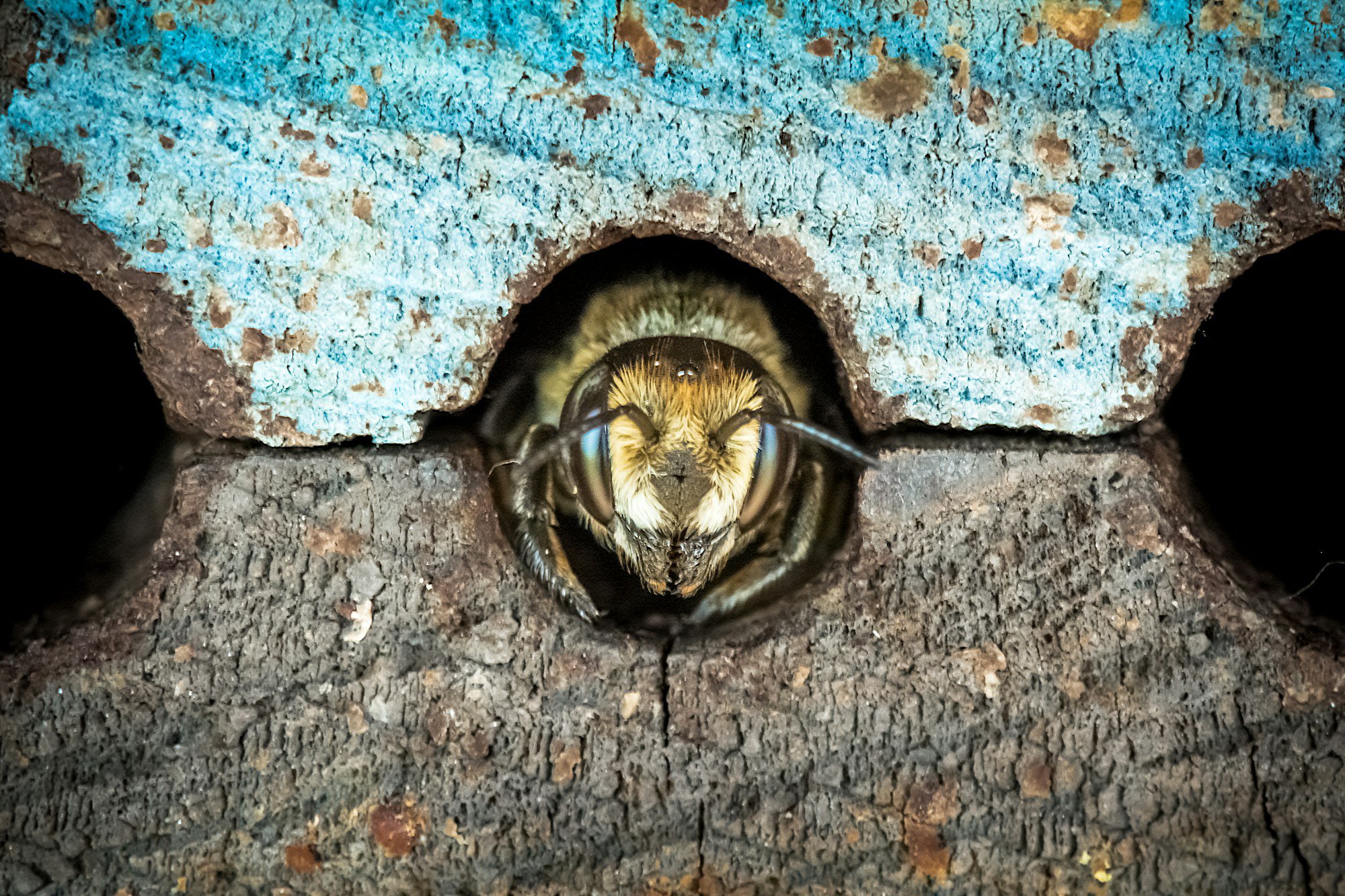
Carpenter bees, while not as notorious as termites or carpenter ants, can still cause significant damage to wooden structures. Often mistaken for bumblebees due to their similar size and appearance, these solitary bees carve out galleries in wood to lay their eggs. Over time, repeated infestations can weaken structural elements and mar the aesthetic appeal of wood surfaces. This post will guide you through identifying carpenter bee damage and effective strategies for eliminating them from your property.
Identifying Carpenter Bee Damage
The first step in dealing with carpenter bees is to identify their presence accurately. Unlike termites that eat wood, carpenter bees do not consume the wood but rather excavate it to create nests. Here are signs that indicate you might be dealing with a carpenter bee infestation:
- Round, Smooth Holes: The most telltale sign of carpenter bee activity is the presence of perfectly round holes about 1/2 inch in diameter on wooden surfaces. These entry points lead to tunnels inside the wood where the bees nest.
- Sawdust: As they burrow into wood, carpenter bees leave behind piles of sawdust beneath entry holes.
- Staining: Look for yellowish stains around entry holes caused by bee waste.
- Buzzing Sounds: You may hear a faint buzzing sound coming from within wooden structures as the bees work inside.
Understanding these signs is crucial for early detection and prevention of further damage.
Strategies for Eliminating Carpenter Bees
Once you've identified an infestation, it's time to take action against these unwelcome guests. Here are proven methods for killing carpenter bees and preventing future invasions:
Chemical Treatments
Insecticidal sprays specifically designed for killing bees can be effective when applied directly into the entrance of the nests. Dust formulations are particularly useful as they stick to the bodies of returning bees, ensuring that the insecticide reaches deep inside the tunnels.
Physical Removal
For those who prefer a non-chemical approach, physically removing affected wood can be a solution if the damage is localized and manageable.
Preventive Measures
Prevention is key in avoiding future infestations:
- Paint or varnish exposed wood surfaces as carpenter bees prefer untreated wood.
- Seal off any existing holes after ensuring they are not occupied to prevent re-infestation.
- Install physical barriers like steel wool inside holes before sealing them off.
Professional Pest Control
When dealing with extensive infestations or hard-to-reach areas, hiring professional pest control services might be your best bet. They have access to more potent treatments and possess the expertise required for thorough eradication. Environmental Pest Control provides free inspections for all carpenter bee issues so call today for your free inspection and recommendation.
Conclusion
Carpenter bee infestations should not be taken lightly due to their potential to cause significant structural damage over time. By learning how to identify their presence early and understanding various methods of eradication and prevention, homeowners can protect their properties from these destructive pests. Whether through DIY methods or professional assistance, taking decisive action against carpenter bees will ensure your wooden structures remain strong and beautiful for years to come.





